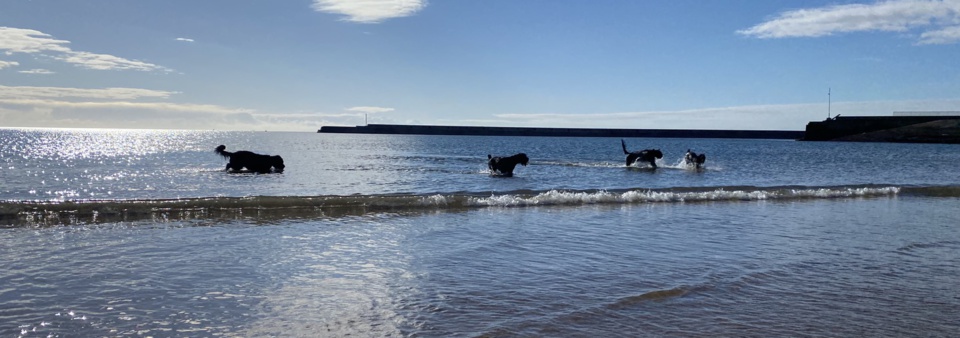
Toilet Training
Begin the puppy house training process by taking puppy outside to the same spot in the garden at the following times:
1. Shortly after each feeding, playing, exercise, and any excitement.
2. Immediately upon waking
3. First thing in the morning
4. Last thing at night
5. Once every hour
It’s important to stay outside with him. Be patient and wait. As soon as he begins, say a chosen phrase to him such as “Toilet!”.
When he has finished, praise enthusiastically and play a game with him. Keep the area clean by picking up any mess and flushing it down the toilet.
However, there is no need to stay outdoors for hours, waiting for him to go. Wait for a few minutes only and if nothing happens, take him inside and try again a little later.
If at any time of the day you notice him sniffing the floor and circling or getting ready to squat, immediately issue your chosen command and take him outside. Let him walk. Do not pick him up, or he will not learn the vital link in the process, which is: “When I need to go, I need to get to the back door and into the garden.”
If, at any time, you catch him in the act of going in the house, quickly issue him with a stern command of, “No!” The command should be loud enough to capture his undivided attention
and to stop him mid-flow, but not so loud that he runs for cover. Do not punish or get angry; the distress this causes your puppy will inhibit the learning process. He will also begin to avoid going
to the toilet in front of you because he knows it makes you angry and will sneak away to do it, making it harder for you to teach him the correct behaviour. Without fuss, simply move him outside and
let him finish his ‘business’, praising heavily when he does.
Toilet training should not end with house breaking. If you want to avoid the unpleasant but necessary task of picking up after your pet in the street, it makes sense to train him to go before you
leave home. This is not as difficult as it may seem but requires a fair amount of patience in the early stages. If you have been successfully working at the housebreaking process, you will, by the
time you are able to take your puppy out, have a particular phrase that your puppy will associate with going to the toilet.
You should also have a fairly regular routine and will have some idea of when your puppy needs to go. Try to arrange your first walk to coincide with this time. Go out to the garden as usual, repeating your chosen phrase until your puppy does what is required. Praise enthusiastically and then take him out for a walk. If he does not go to the toilet, take him back inside for a while and try again later.
If you take your dog out for a walk only after he has been to the toilet, he will eventually begin to realise that producing the required deposit results in a walk.
A lot of puppy owners use a technique known as ‘crate training' in order to speed up the housebreaking process. Crate training is successful because the puppy is far less likely to
have accidents in the house as they are confined, at sleeping times, to a smaller area which resembles a nest more than house does.
The puppy is therefore more naturally inclined to hold their urge to ‘go’ until they are let out of the crate and it then becomes easy to time and anticipate your puppies toilet breaks and thus
issuing more praise, less instances of the puppy going in the house and a general acceleration of the entire process is easier.
Crate training is a personal choice and the principles of housetraining remain the same.
Golden Rules of Puppy House Training:
- Praise (wildly) when they do ‘go’ outside
- Never scare or startle the puppy if catching them in the act indoors
- Never, ever, under any circumstances rub a dog’s nose in any accidents. THIS DOESN’T WORK and is entirely unhealthy and unpleasant.
Try to spot the tell-tale signs when your puppy is telling you they need the toilet. These include circling, sniffing in corners, whining for no apparent reason and any
time shortly after eating or drinking.
Remember, a small puppy’s bladder is physically very small and they actually can’t hold their toilet movements in for long periods at a time.
It is inevitable that a young puppy WILL have accidents in the home but as they get older and in combination with a well-planned house training program, they will get
better.
